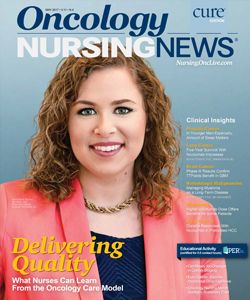Sticker Shock: How the OCM Hopes to Tackle Financial Toxicity
The Oncology Care Model (OCM) aims to reduce the cost of care and nurses can have an impact on patient outcomes while adapting to changes in practice resulting from the model.
Yousuf Zafar, MD

Yousuf Zafar, MD
In 2013, Yousuf Zafar, MD, and a colleague introduced the term "financial toxicity" in a 2-part article addressing the burdensome cost of cancer care. They discovered that for patients, even those with insurance, not only did chemotherapy have a physically toxic effect, but a financial one as well. An aging demographic, rising drug costs, higher insurance premiums, and skyrocketing deductibles were seen as largely to blame for dramatically increased out-of-pocket costs of care.
For many patients, the researchers found, the effects of financial toxicity were life changing— from canceling vacations to coming up with money for food and clothing. At the time, the medical community had no way to describe the impact this burden placed on patients. Zafar diagnosed the problem and gave it the name "financial toxicity" as a way to both identify and address it for what it truly was.
In an interview with Oncology Nursing News, Zafar discussed ways the OCM aims to reduce the cost of care and the opportunity that nurses have to impact patient outcomes while adapting to changes in practice resulting from the model. "Improving the patient experience, as the OCM intends to do," Zafar said, "can happen only when the cost of care is included as an integral part of cancer care moving forward."
For this to happen, he said, "the entire care team—particularly oncologists and nurses— plays a role...Among the providers patients prefer to talk to about their cost of care, the nurse ranks high, if not highest, on the list. If nurses are not asking patients about their ability to pay for treatment, then it is possible nobody else is either." Only after financial toxicity is recognized, can patients be linked with appropriate resources, such as financial assistance programs, drug coupons, and other options that exist. This is important, because even when patients receive value-based care, they still face high out-of-pocket costs. By linking value and quality with reimbursement, the OCM provides incentives to practices that focus on evidence-based care by reconsidering the use of high-cost, experimental drugs with uncertain or limited efficacy.
Although it is too early to tell how the OCM initiatives will impact the patient experience in the long-term, Zafar acknowledged that the goals of the model make sense, at least in theory: Attacking the problem of financial toxicity is a step in the right direction, and it begins by talking about it with as much concern and as routinely as the effects of cancer-killing drugs.
Zafar SY, Abernethy AP. Financial toxicity, Part I: a new name for a growing problem. Oncology. 2013;27(2):80-81.

Innovative Program Reduces Nurse Turnover and Fosters Development
Published: September 12th 2024 | Updated: September 12th 2024The US Oncology Network (The Network) has developed one of the most comprehensive programs in the nation to support the professional development and retention of new oncology nurses.


